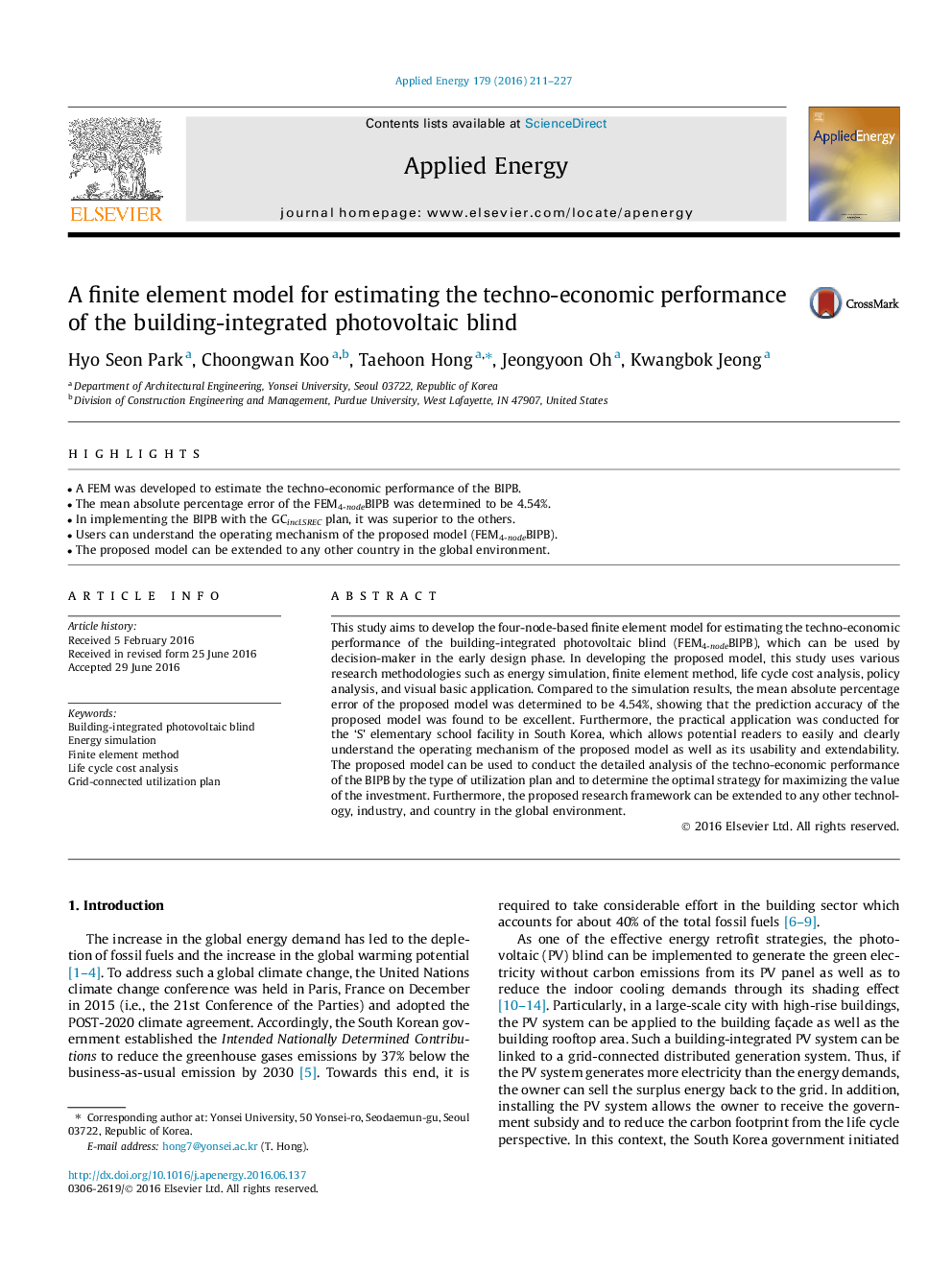| Article ID | Journal | Published Year | Pages | File Type |
|---|---|---|---|---|
| 6682078 | Applied Energy | 2016 | 17 Pages |
Abstract
This study aims to develop the four-node-based finite element model for estimating the techno-economic performance of the building-integrated photovoltaic blind (FEM4-nodeBIPB), which can be used by decision-maker in the early design phase. In developing the proposed model, this study uses various research methodologies such as energy simulation, finite element method, life cycle cost analysis, policy analysis, and visual basic application. Compared to the simulation results, the mean absolute percentage error of the proposed model was determined to be 4.54%, showing that the prediction accuracy of the proposed model was found to be excellent. Furthermore, the practical application was conducted for the 'S' elementary school facility in South Korea, which allows potential readers to easily and clearly understand the operating mechanism of the proposed model as well as its usability and extendability. The proposed model can be used to conduct the detailed analysis of the techno-economic performance of the BIPB by the type of utilization plan and to determine the optimal strategy for maximizing the value of the investment. Furthermore, the proposed research framework can be extended to any other technology, industry, and country in the global environment.
Related Topics
Physical Sciences and Engineering
Energy
Energy Engineering and Power Technology
Authors
Hyo Seon Park, Choongwan Koo, Taehoon Hong, Jeongyoon Oh, Kwangbok Jeong,
